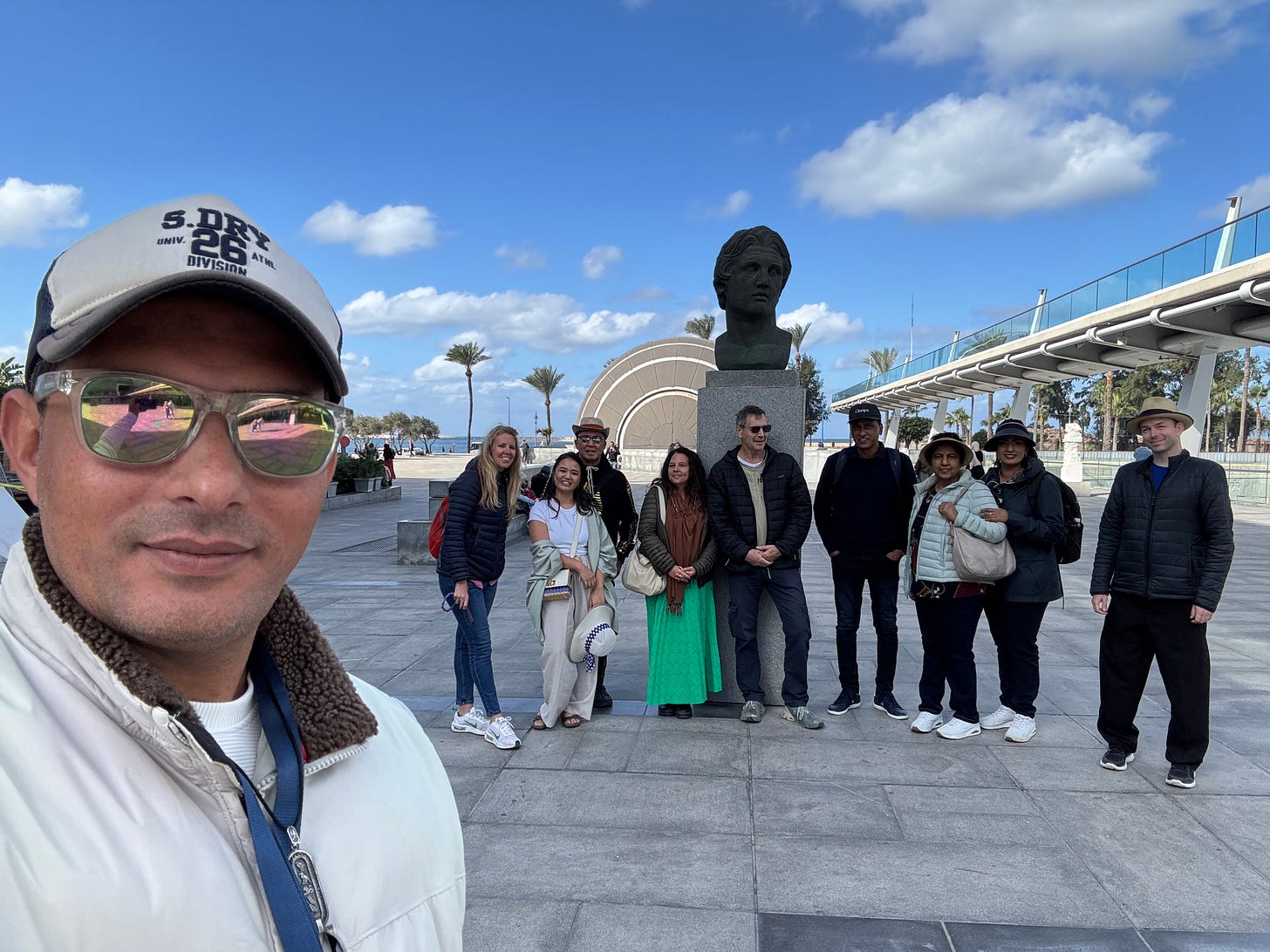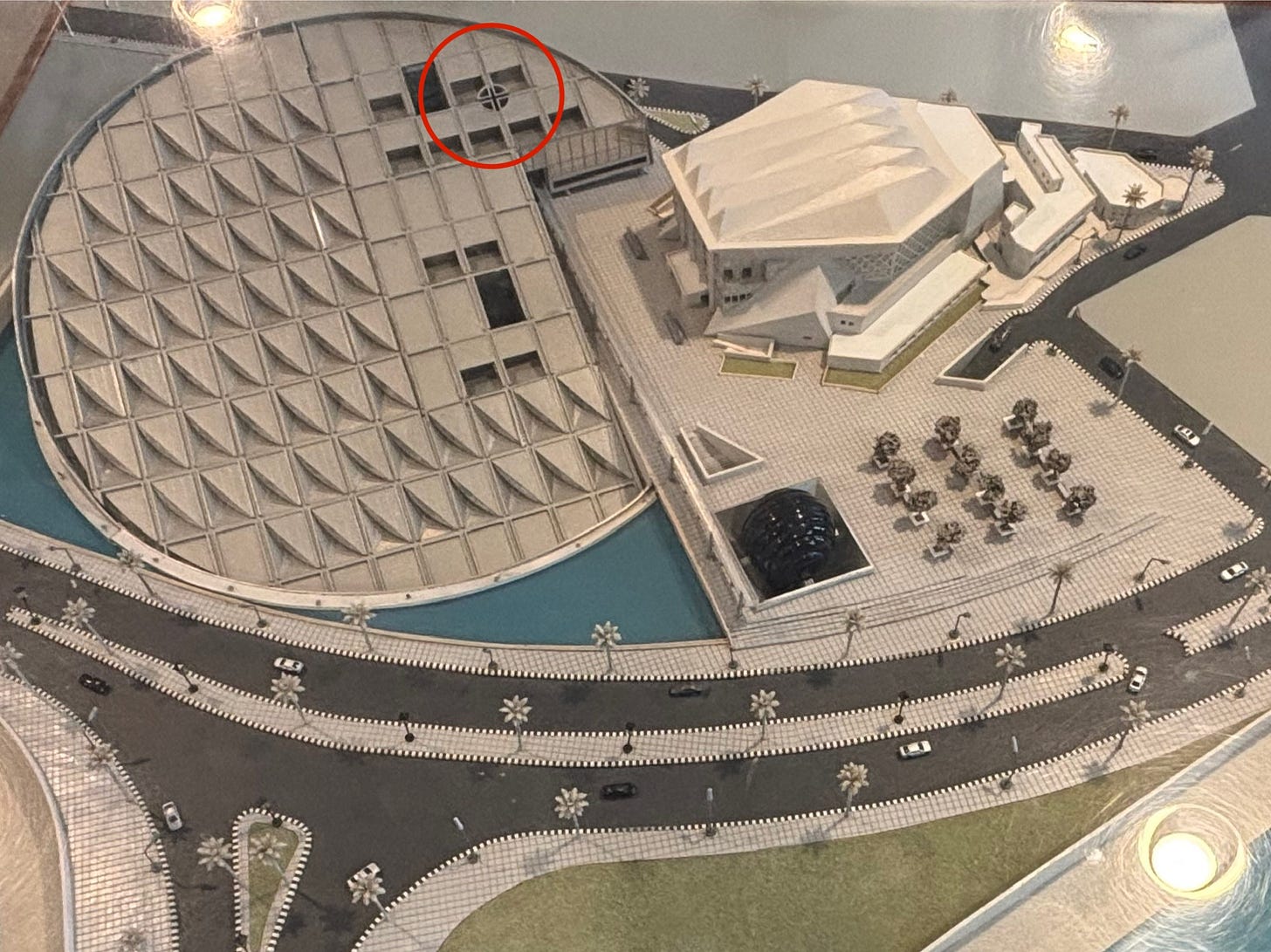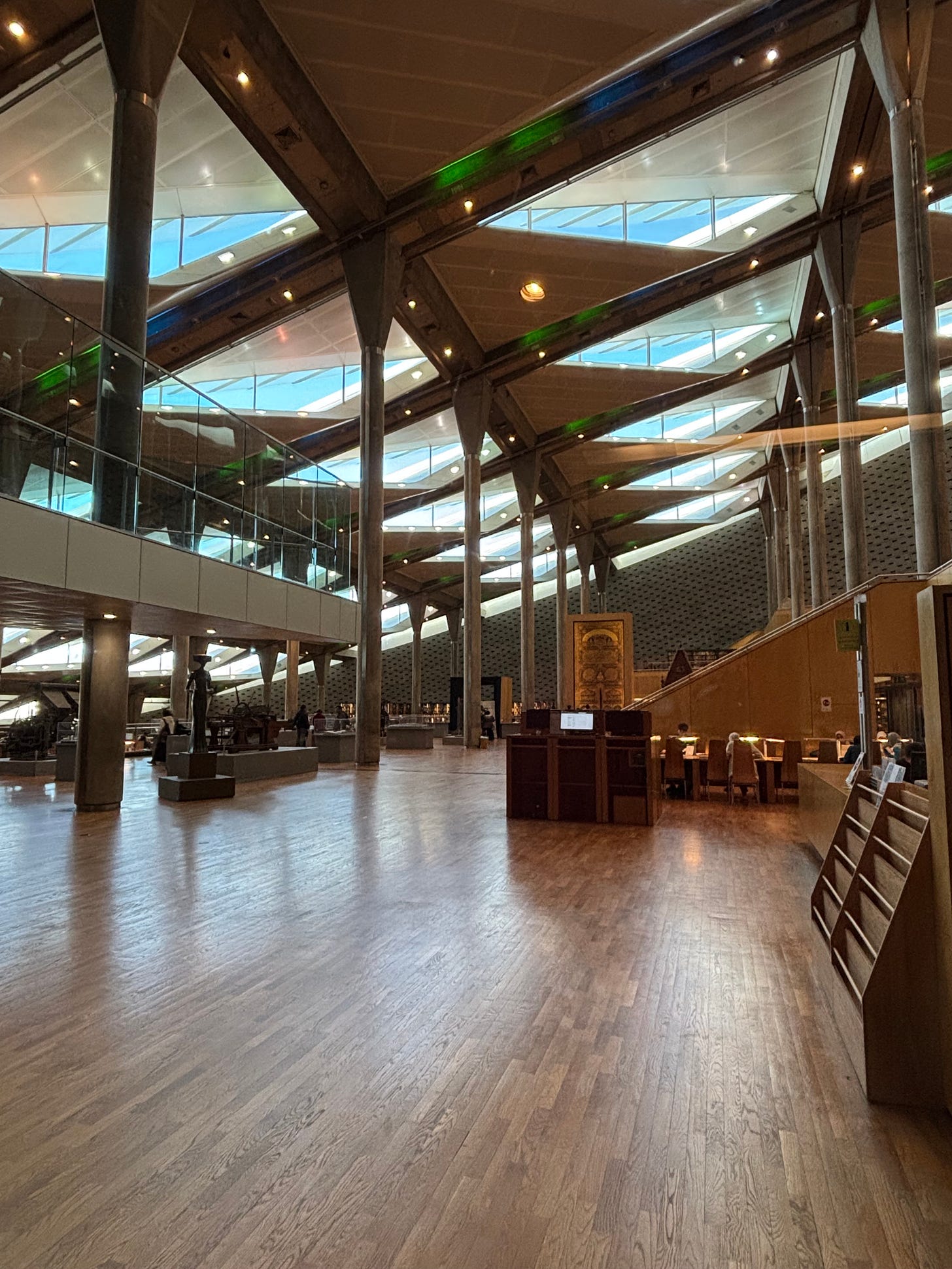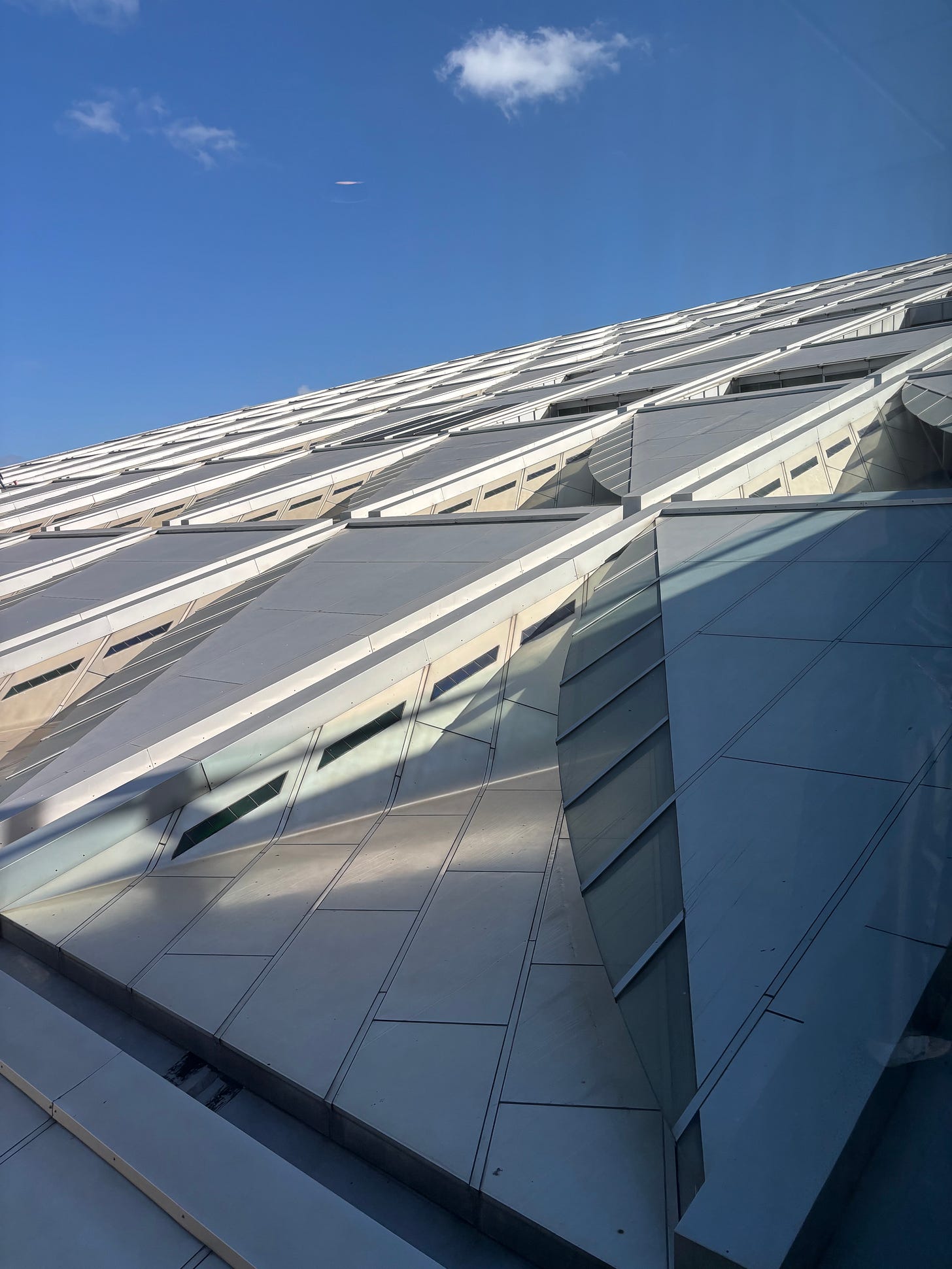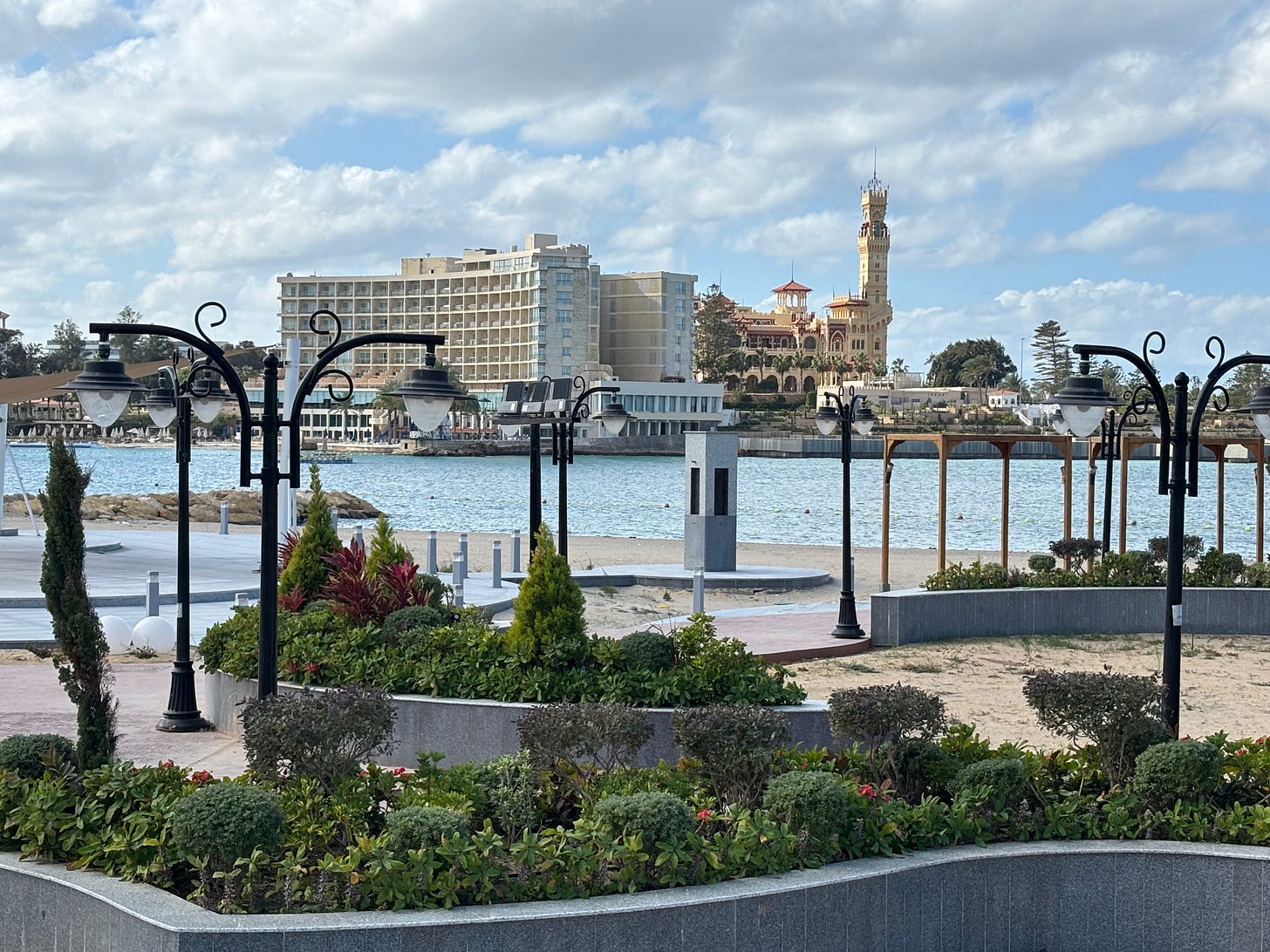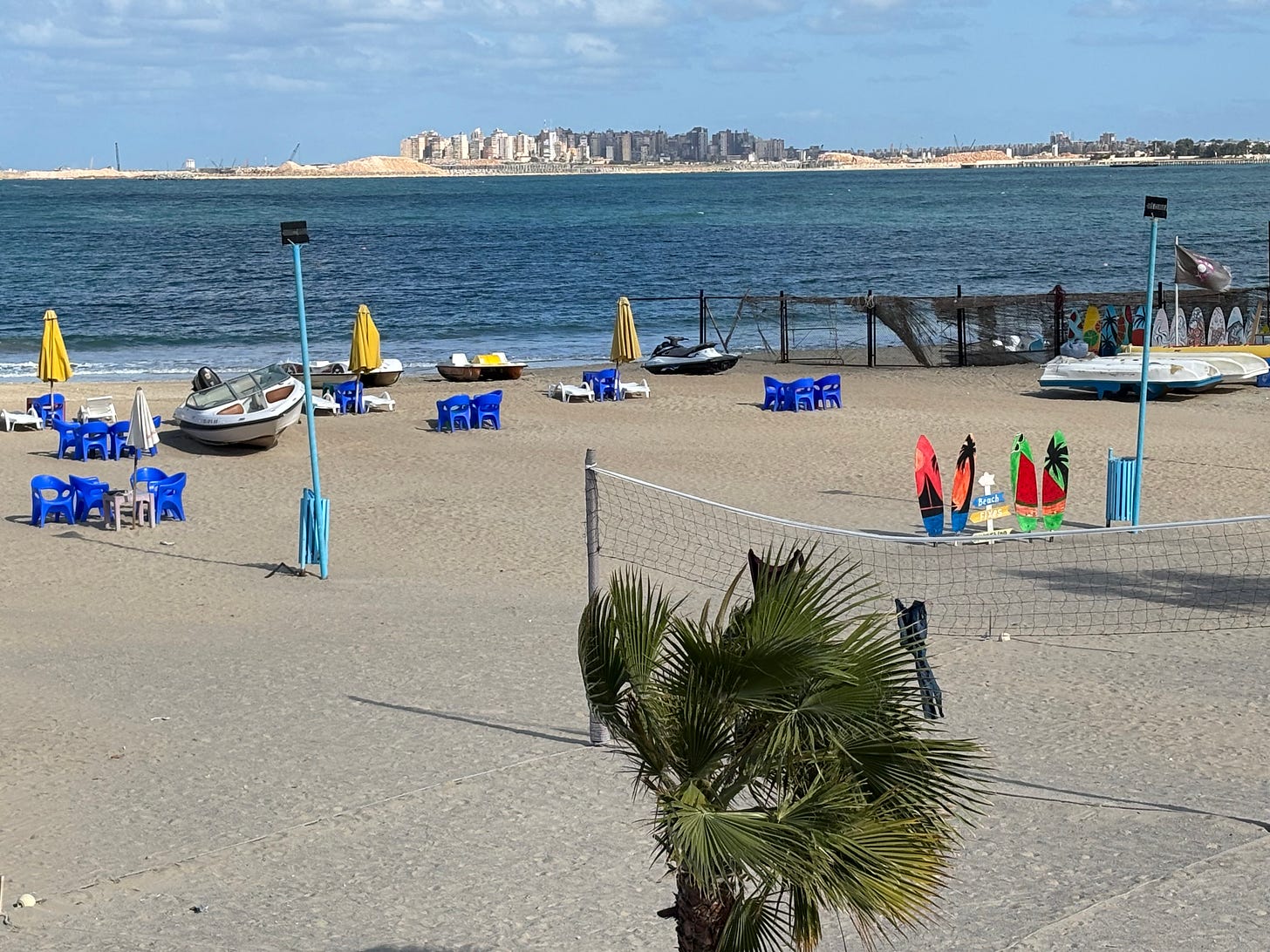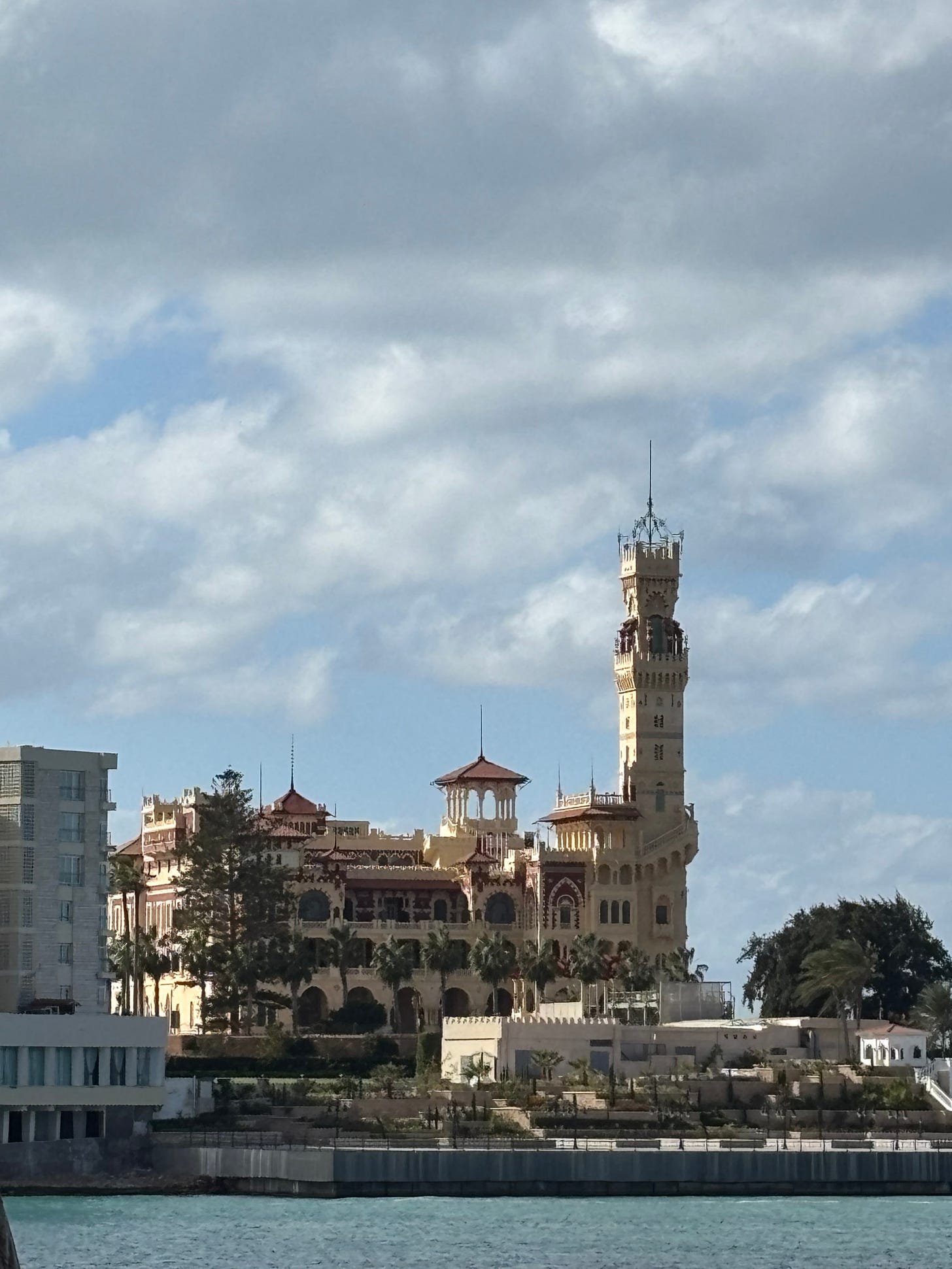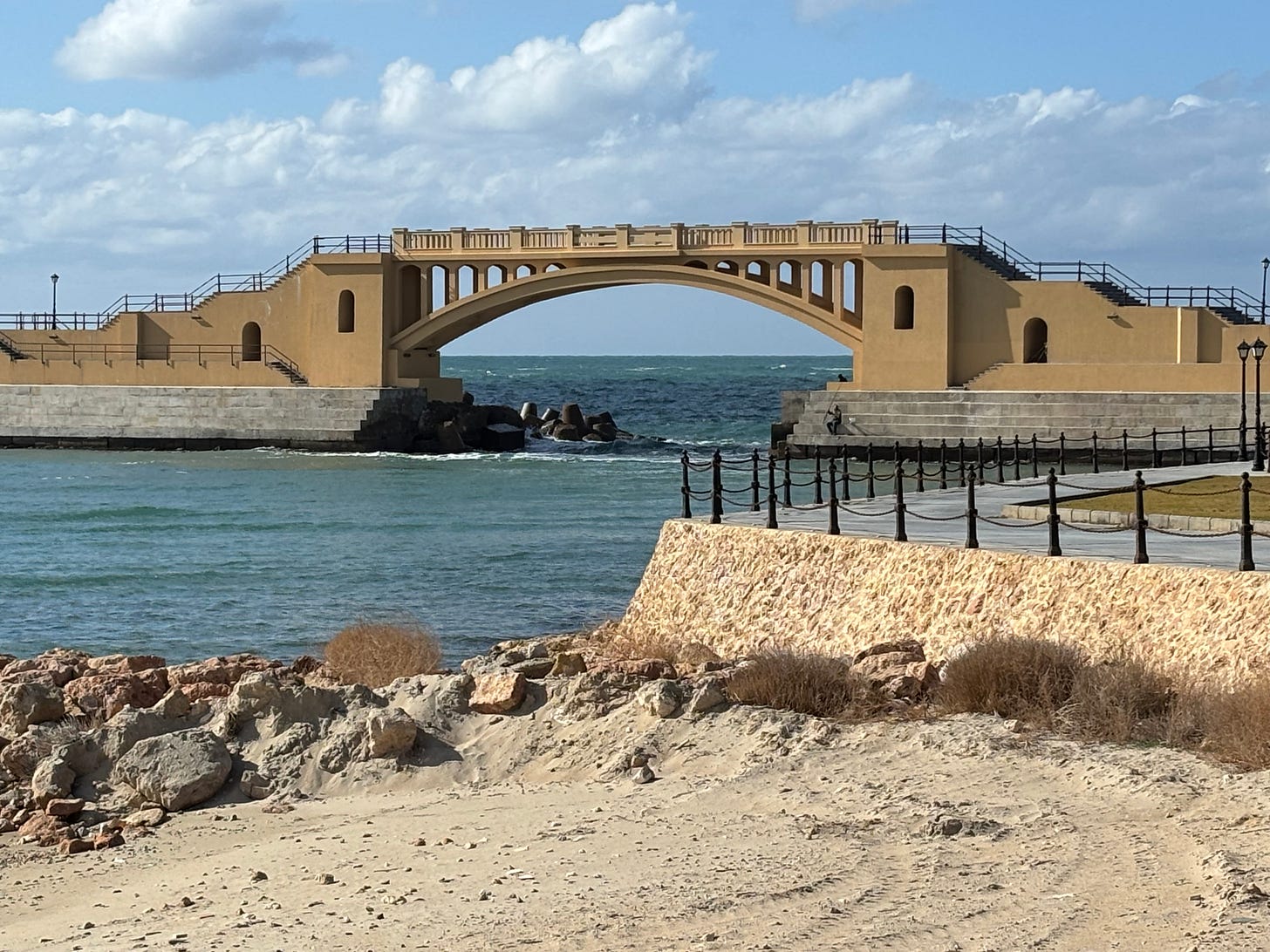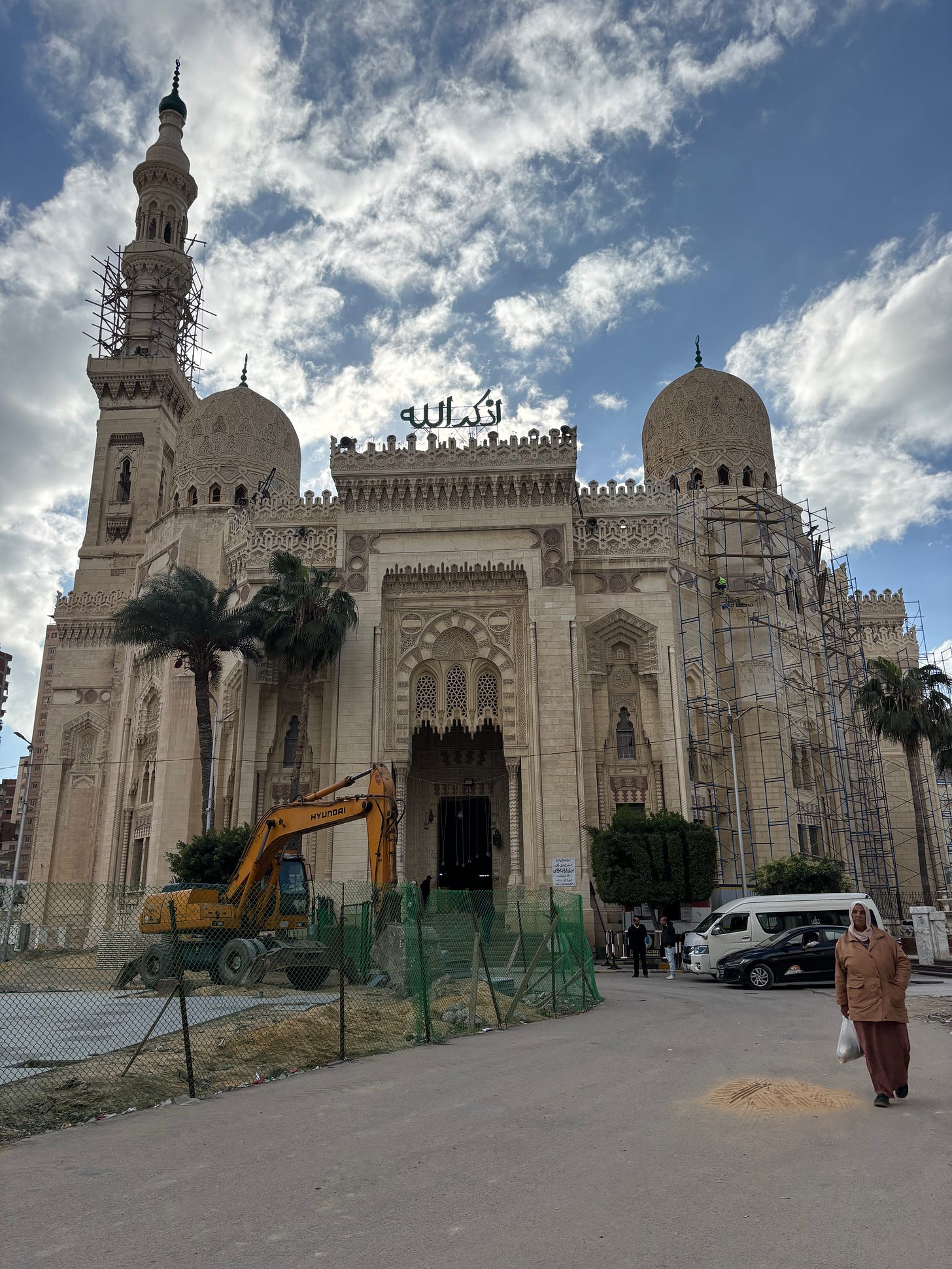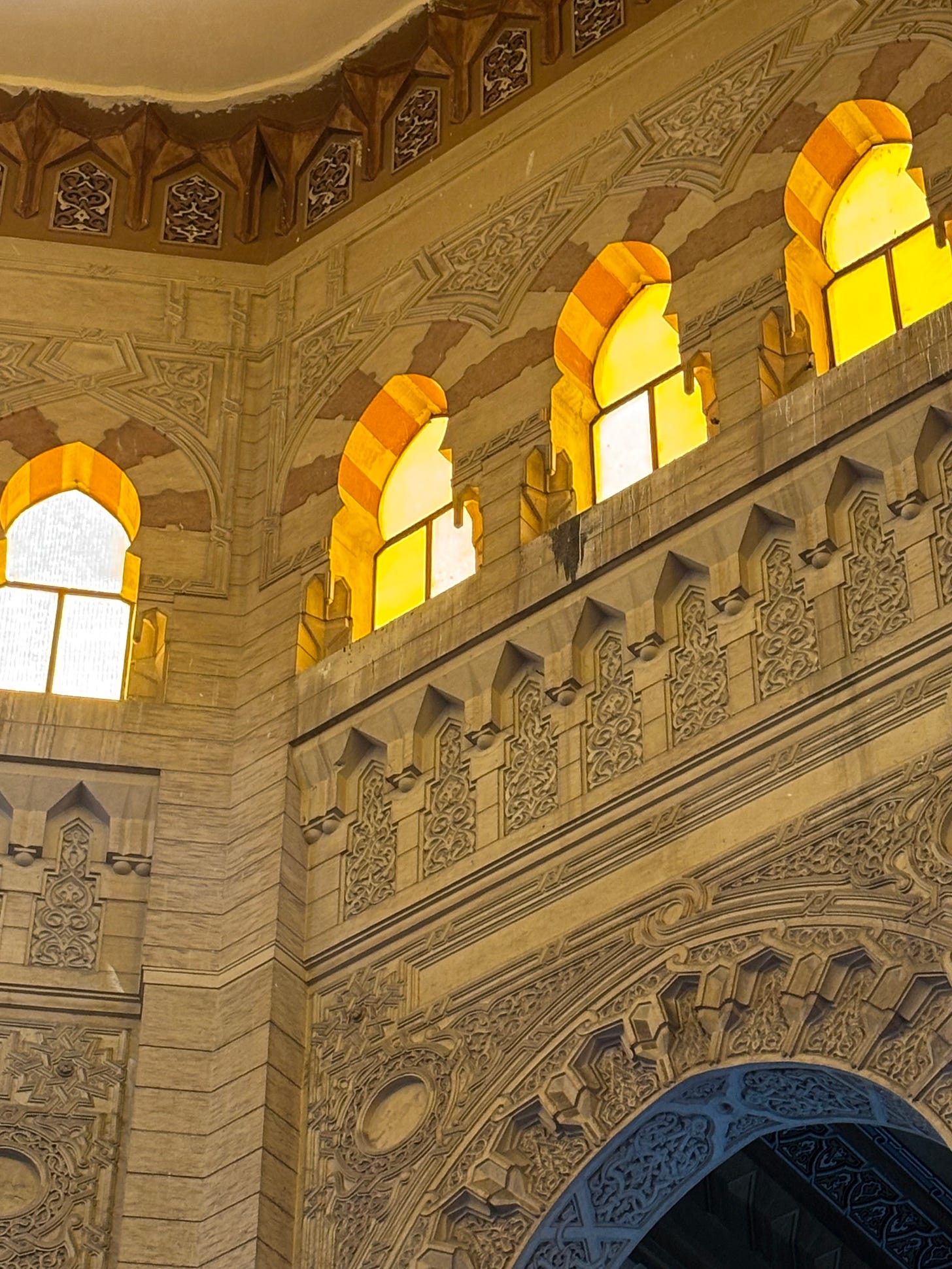“Always walk through life as if you have something new to learn, and you will.“ Vernon Howard
Disclaimer: this is a long post so make sure to click “view entire message” at the bottom of the email to see all of the photos and text.
Hello from Alexandria, Egypt - The City of Knowledge and Learning! I've been so excited to visit this city!
A little history - Alexandria was founded by Alexander the Great in 332 BC. It lies along the Mediterranean Sea in northern Egypt, making it an important port city. Throughout history, Alexandria has been a melting pot of cultures, including Greek, Roman, Jewish, and Islamic influences. It is the second-largest city in Egypt, with a population of over 5 million people. It has one of the oldest tram systems in the world, operational since 1863. And my personal favorite fact, Cleopatra the famous queen of Egypt resided here, and the city served as a critical base during her reign. I have a secret love for Cleopatra.
Visiting Alexandria unfortunately was not part of our big tour around the country so I booked a day trip from Cairo on my own. Rob from the 10-day tour group decided to join me as well. It is about a two and half to three-hour car trip one way so it was nice to have a friendly face in the van.
Our first stop was to the (new) Alexandria Bibliotheca. The largest library in the world with over one million books in the building and over eight million available online. I was told you can get a trial library card online and a real one if you visit there in person. So if you are looking for a rare book, check out their website, they just may have it.
As I'm sure you know or remember from High School history class that the original Library of Alexandria was destroyed. Ancient scrolls and texts on papyrus from around the world were lost for forever. The jury is out on what actually destroyed the library. Some believe Julius Caesar accidentally burned it during the Civil War in 48 BC others believe that the fire did not destroy it in its entirety and was finished off by a Palmyrene invasion in 170-275 AD. Either way, it is sad that society has lost so many important ancient texts. The library is considered one of the Seven Wonders of the Ancient World.
If you look closely at the red circle in the photo below, the lead architect Kjetil Trædal Thorsen included the Norwegian flag in the design of the building as a hat tip to his homeland.
The building is incredible. The windows were designed to allow enough light to read without becoming a distraction to the reader.
Key Architectural Features:
1. Circular Design: The library is shaped like a giant tilted disc, symbolizing the rising sun, representing knowledge spreading to the world.
2. Outer Wall: Its granite exterior is engraved with letters, symbols, and characters from 120 different scripts, emphasizing the universality of knowledge.
3. Innovative Structure: The library includes advanced features such as natural lighting systems and earthquake-resistant engineering.
A view of the outside panels and windows.
The front of the building.
There are several small museums inside the building as well. One specifically dedicated to former President, Mohamed Anwar Sadat (1918-1981).
After a brief tour of the library, we rode about twenty minutes through the city to El Montazah Park for a cup of tea and to see the beautiful grounds and beaches lining the Mediterranean Sea. Covering over 300 acres, the gardens are filled with palm trees, colorful flowers, and manicured lawns. The park/gardens were once exclusive to royalty but are now open to the public. It was a Tuesday so nobody was using the beach but our guide said the weekends are packed. Even at this time of year people are swimming.
Located on the property is the Montaza Palace. Built in 1932, it showcases a blend of Ottoman and Florentine architectural styles. Originally a royal residence but now it is a hotel.
After lunch we visited Sidi Morsi Abu al-Abbas Mosque. One of the most famous and historic mosques in Alexandria. The original building was built in 1307 and this structure is from 1775 during the Ottoman period. The architecture is stunning. Unfortunately, there was construction happening all around the building so we could not see it from all angles but nonetheless it was beautiful from the front.
Beautiful design work inside and light streaming through the windows.
Next up…The Catacombs of Kom El Shoqafa! Possibly the number one tourist site in Alexandria. Believed to have been built in the 2nd century CE during the Roman period, the catacombs is one of the Seven Wonders of the Middle Ages. They are notable for their unique blend of Egyptian, Greek, and Roman architectural styles and influences.
The catacombs were accidentally discovered when a donkey fell into an access shaft…I’m not kidding. How bizarre. Luckily for history fanatics but not so great for the donkey.
The catacombs are three levels deep so if you don't like small spaces under the ground, I suggest skipping this site.
The complex includes a spiral staircase, central shaft, tomb chambers, banquet halls (where they would have feasts in honor of the dead), and sculptures.
There was so much talk on the tour about how Alexandria was long overdue for an earthquake that I silently got a little panicked in my head while we were below ground (specifically near the rows of family tomb chambers) wondering what would happen if there was an earthquake during our tour. Probably not a good thought to have while three floors below ground in a burial site.
See what I'm talking about?
Keep reading with a 7-day free trial
Subscribe to The Wondering Wanderer to keep reading this post and get 7 days of free access to the full post archives.




